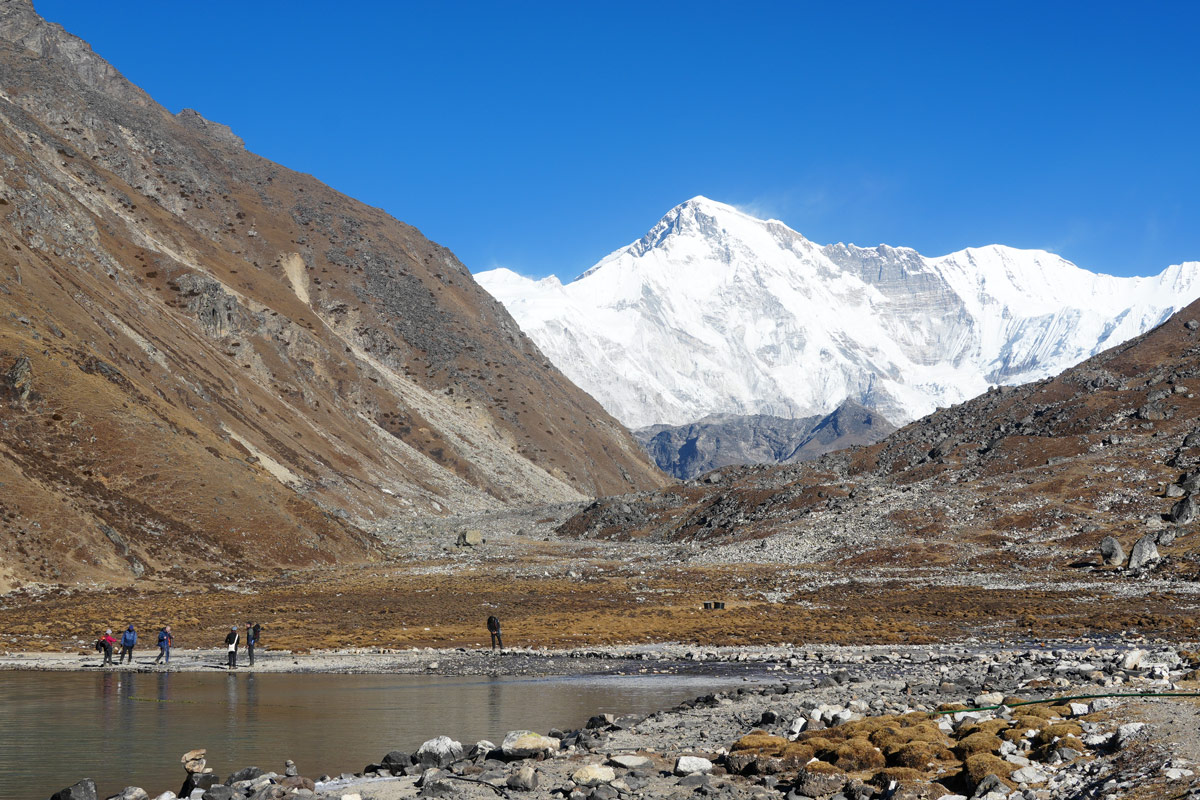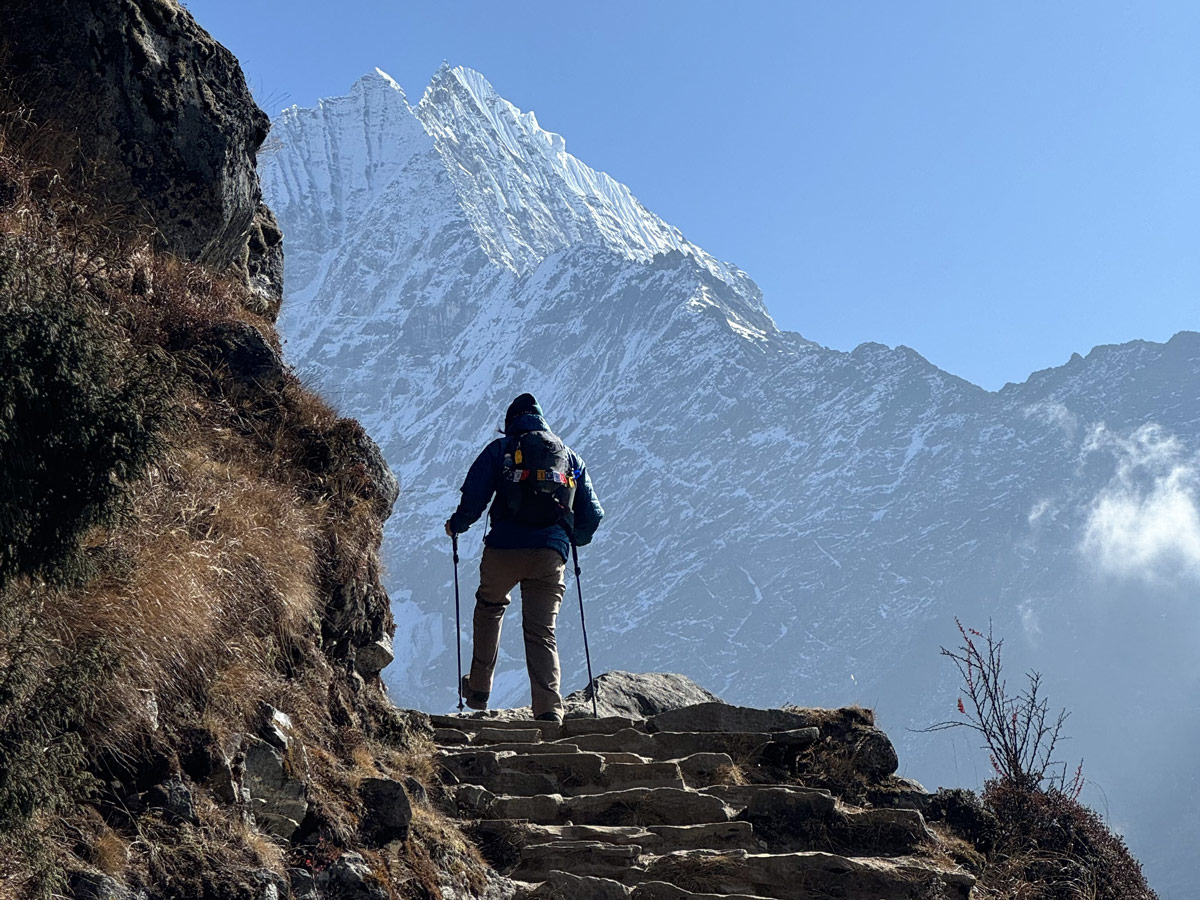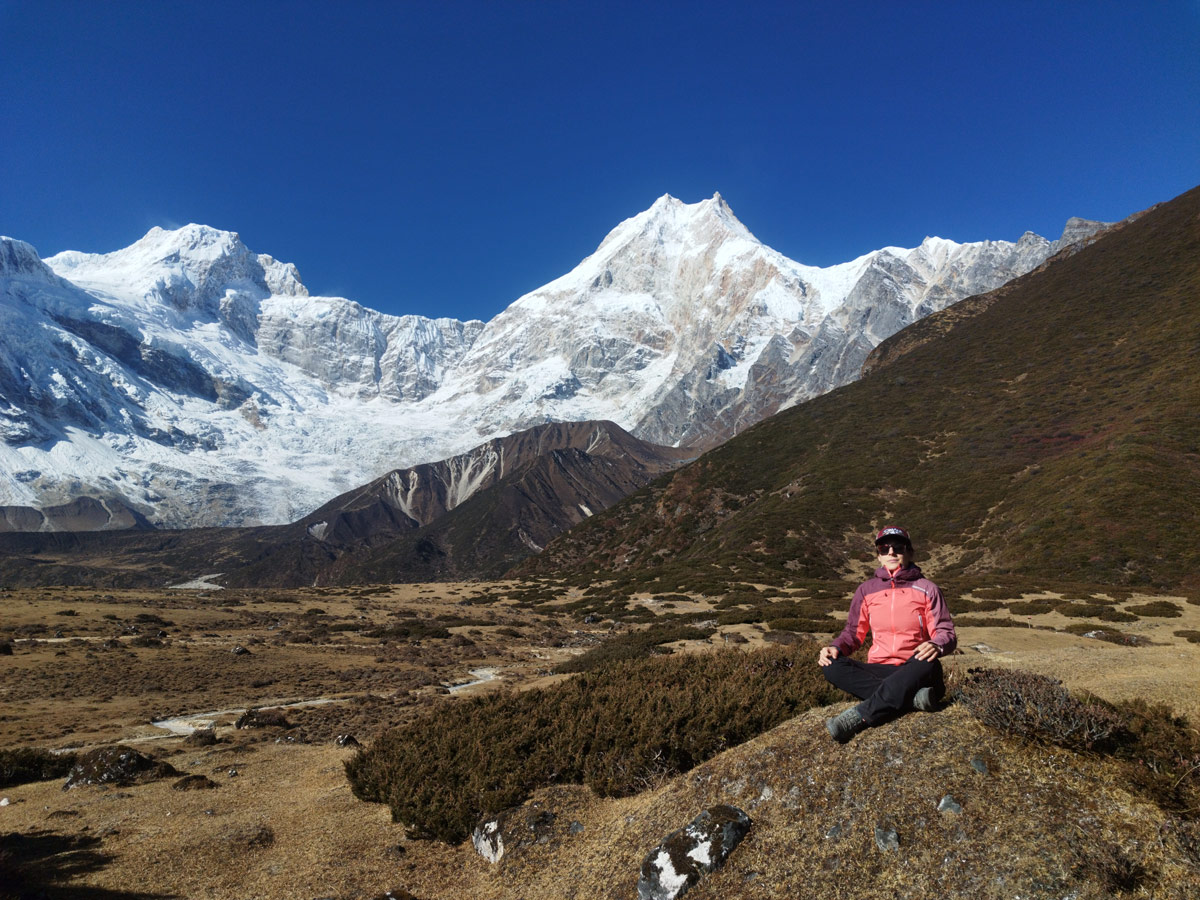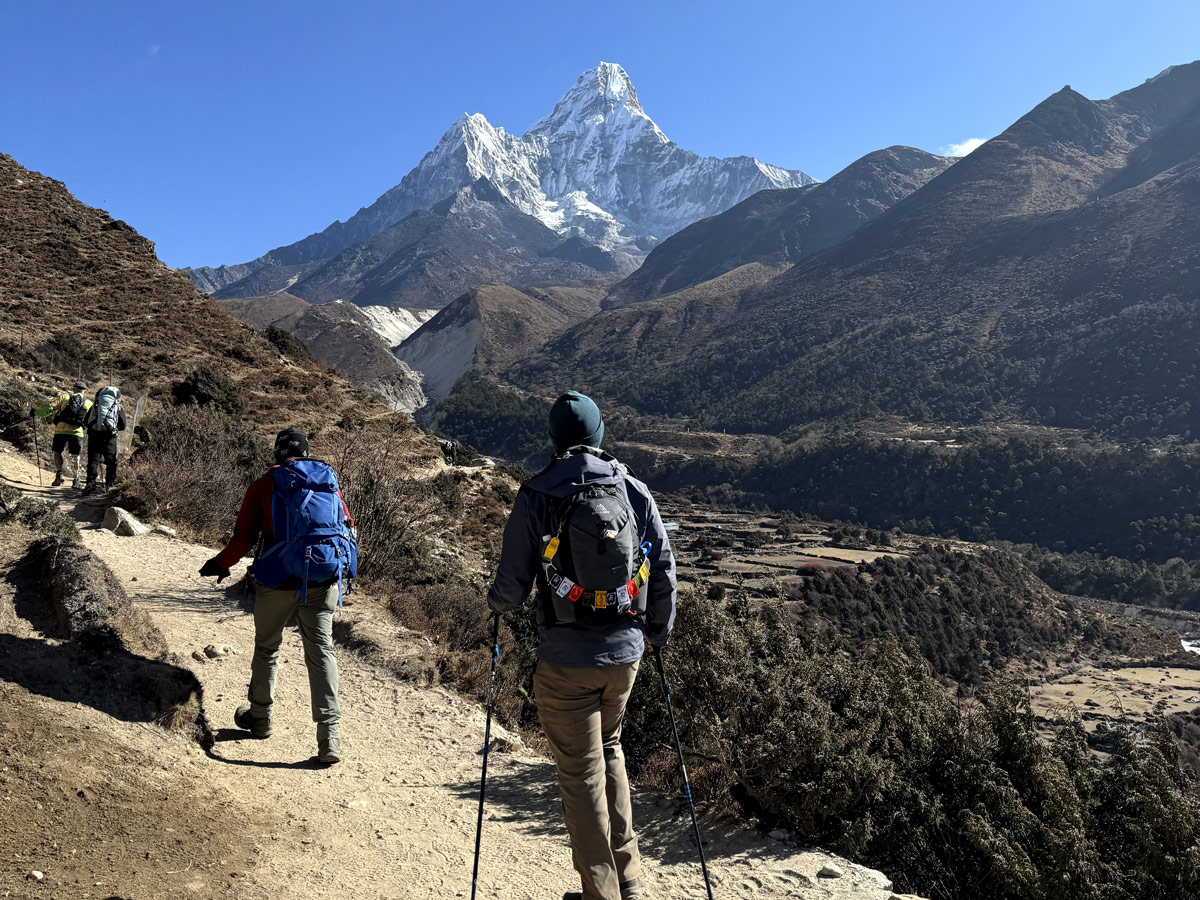Often referred to as trekkers paradise, Nepal is home to some of the most breathtaking trekking trails across the world. This is due to a unique combination of towering Himalayas and rich cultural experiences that exists on these trails.
Whether you’re walking through the rhododendron-filled forests of the Annapurna region, crossing high-altitude passes in the Everest region, or exploring the remote wilderness of Dolpo, every trek has something unique to offer.
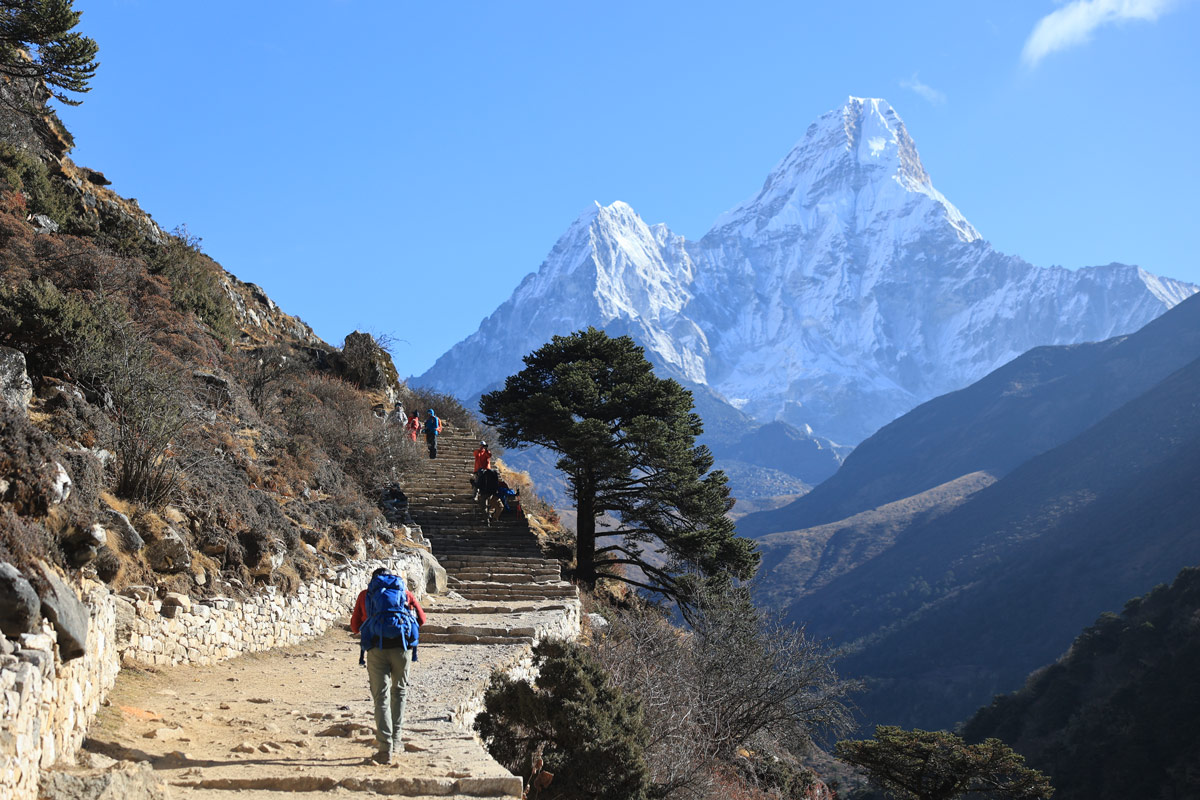
However, with hundreds of trekking routes, multiple trekking agencies, and a wide range of trekking experiences available, it can be overwhelming for a beginner to choose the right trek.
The quality of your trek plays a significant role in ensuring a safe, comfortable, and memorable journey. A well-planned trek can be life-changing, while a poorly chosen one can lead to discomfort, altitude sickness, or even a dangerous situation.
Therefore, in this blog, we have the ultimate guide to choosing a high quality trek in Nepal which can enhance your trekking experience ten folds. Continue reading.
Understanding What Makes a Quality Trek in Nepal
A high-quality trek in Nepal is achieved with a combination of different factors coming into play together. These components together as well as individually are the ones which enhance your trekking experience. Some such components are listed below:
Well Designed Itinerary
A well structured trekking itinerary is the most crucial part of a smooth, enjoyable, as well as safe trekking experience. Without a proper itinerary, you will potentially come across many issues both physically and mentally.
Most of the trekking routes in Nepal take you to higher altitudes mostly going above 2,500 meters such as the Everest Base Camp Trek, Annapurna Base Camp Trek, Manaslu Circuit Trek, and more.
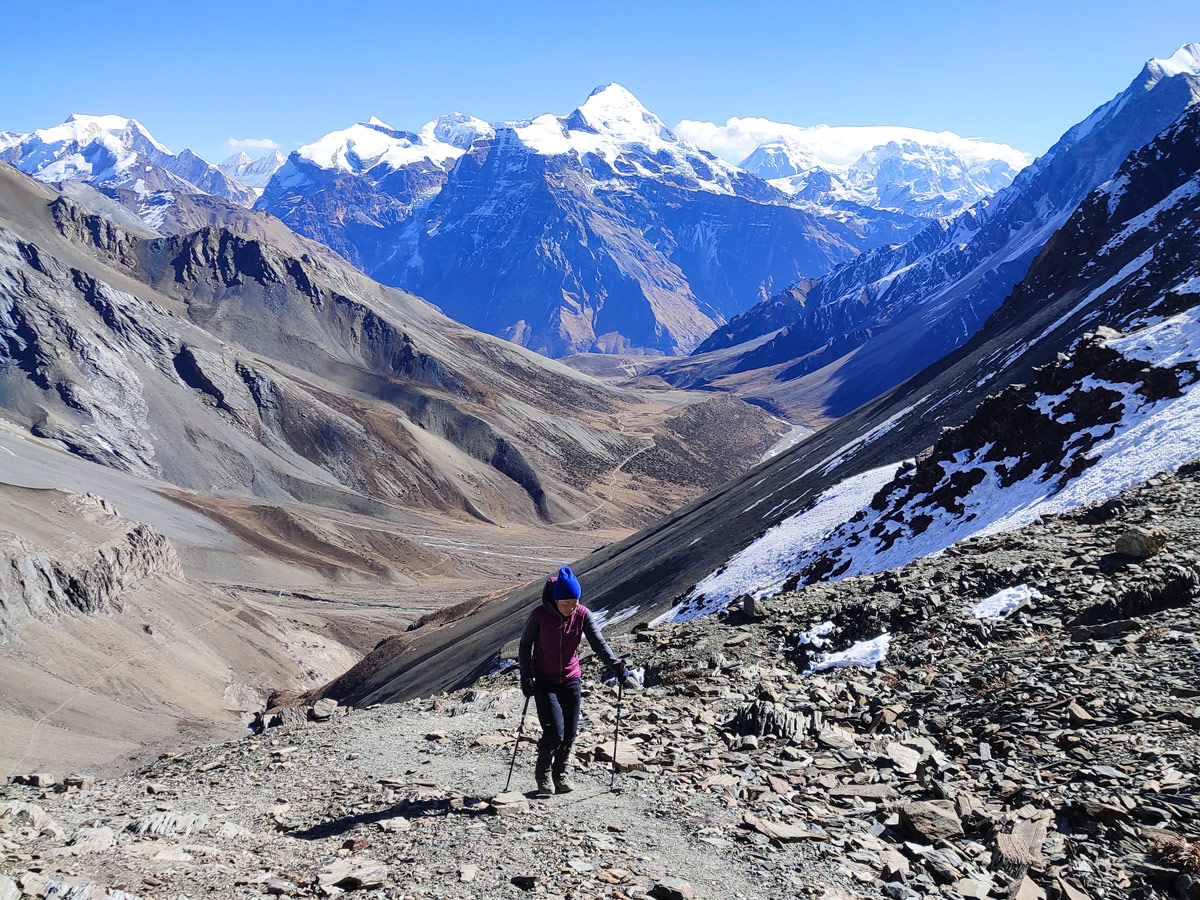
In altitudes above 2,500 meters, altitude sickness becomes a serious risk and trekkers start encountering issues like headache, nausea, vomiting, loss of appetite, and even serious issues like High Altitude Pulmonary Edema and High Altitude Cerebral Edema.
To prevent altitude sickness, proper acclimatization days must be included in your trekking itinerary. At least one acclimatization day for moderate treks and two or more acclimatization days for difficult treks should be included.

Your itinerary should be planned in a way that you have around 5 to 7 walking hours per day and your trek is not very rushed to prevent exhaustion and any kind of injuries. It is best to include side trips to viewpoints, monasteries, or hidden valleys.
Experienced and Licensed Trekking Guide
Although not strictly implemented, solo trekking is banned in Nepal, i.e. trekkers need a licensed and experienced guide to embark on any sort of trekking adventure in Nepal. In such case, a highly skilled and knowledgeable guide can significantly improve your trekking experience.
You should hire a trekking guide who is government-certified by the Nepal Academy of Tourism and Hotel Management (NATHM). They should be trained in wilderness first aid, altitude sickness management, and emergency response.

While a good guide should be fluent in English to be able to communicate with you, they should also be well accustomed to the language and traditions of the local area where you will be trekking.
This way, the guide will be able to explain the local history, customs, wildlife, as well as figure out the weather patterns and alternate routes if needed in case of any emergency.
A quality guide regularly monitors trekkers’ health and checks for altitude sickness symptoms. They should carry a first-aid kit, oxygen cylinder (if required), and a satellite phone for emergencies.
Reliable Trekking Agency
Figuring out the complete know how’s of a trek including licensed guide, porter, accommodation, permits, and other paper work on your own can be a big hassle for new trekkers in Nepal.
Therefore, it is best to hire a reliable local trekking agency to make your experience smoother. Doing so ensures professionalism, legal compliance, and a well-organized experience.
Make sure that the agency you are booking is registered with Nepal Tourism Board (NTB) and also a member of TAAN (Trekking Agencies’ Association of Nepal). Check for reviews on sites like TripAdvisor, Google Reviews, and other travel forums.
One of the main things to watch out for is transparency in policy and pricing as some companies tend to keep hidden charges. For the best trekking experience in Nepal, hire a reliable agency like Ace the Himalaya.
Ethical Porter Welfare
Porters can be considered the backbone to your entire trekking experience as you won’t have any sort of transportation on the trekking trails and you will have your luggage to carry along.
In such case, you will not be carrying them on your own as the porters will be making your job easier by carrying your luggage for you. They ensure that the trekkers can complete their journey comfortably.
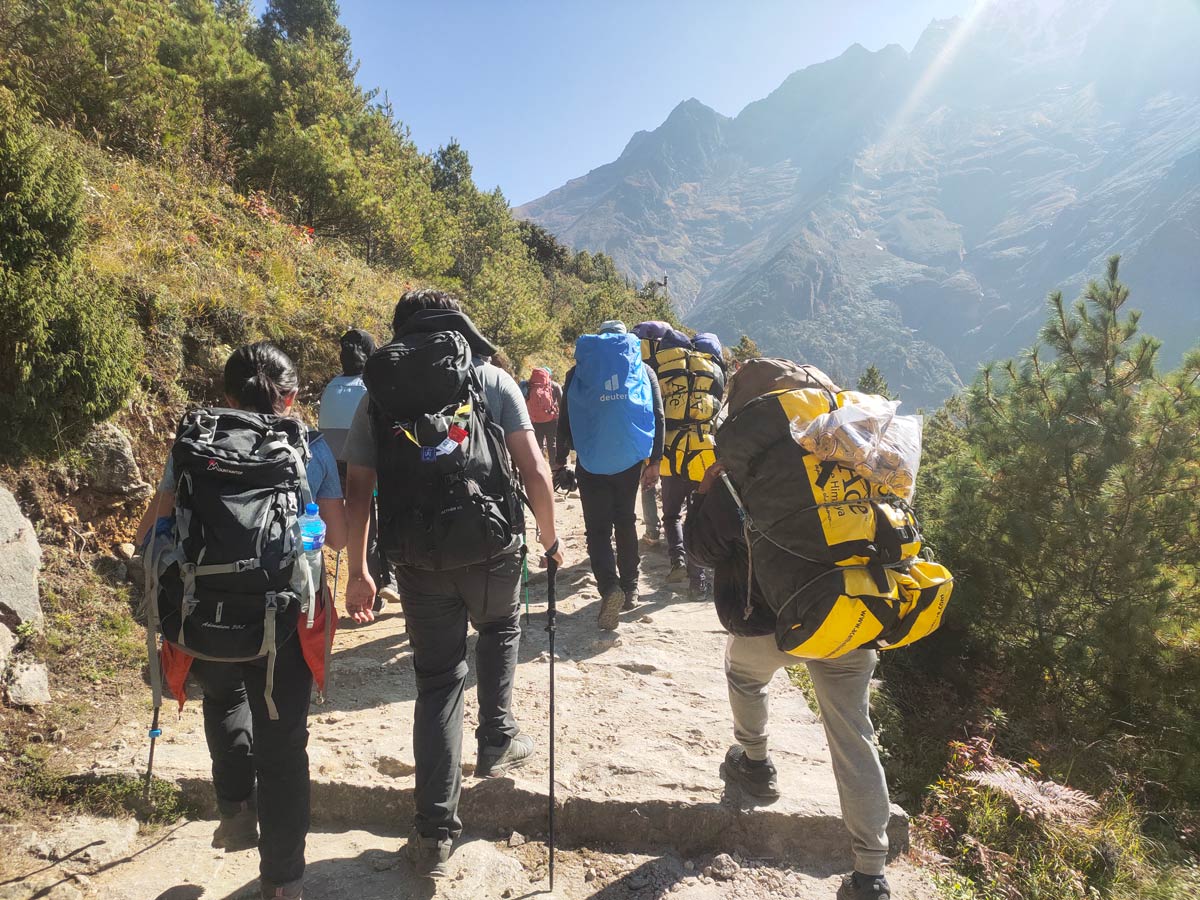
Therefore, you should make sure that your trekking agency follows ethical porter practices. These include:
- Porters should be paid fair wages as per Nepal Labor Law and provided with insurance coverage.
- The agency should provide appropriate trekking gear for porters.
- Porters should not be overloaded—maximum 20–25 kg per porter is ethical.
- All the guidelines set by International Porter Protection Group (IPPG) set guidelines for porter treatment should be met.
Safe and Comfortable Accommodation
Accommodation while trekking in Nepal plays an important role in determining the quality of your trek. While trekking in Nepal, you can get different accommodation options based on the trek that you are choosing.
For those opting for a camping trek, you can think of these options for remote trekking areas like Upper Dolpo and Kanchenjungha Circuit. Such treks include high-quality tents, sleeping bags, and kitchen crew for meal preparation.
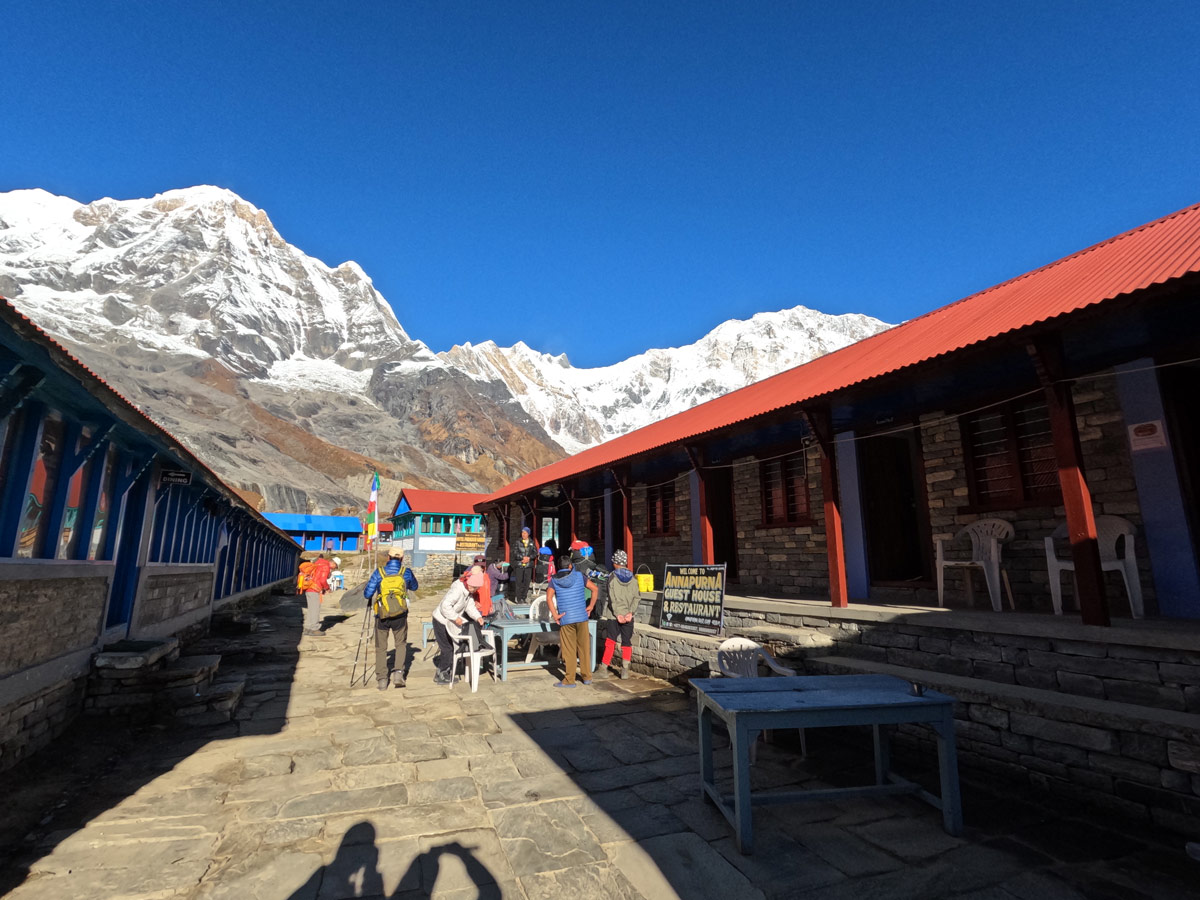
Another most commonly taken option is teahouse trekking in Nepal. In this, you will be staying in teahouses or lodges along the trekking route, and sometimes even on a housestay.
Here you will get basic yet comfortable amenities including warm beds, blankets, shared dining spaces, and shared or private bathrooms depending on the availability, altitude, and the location of the teahouse.
The teahouse culture is most common for classic treks including the Everest Base Camp Trek, Annapurna Circuit Trek, Annapurna Base Camp Trek, Langtang Valley Trek, and more.
A rarely taken but possible option on some treks is luxury accommodation where you will be staying in a luxurious hotel with all kinds of amenities. These options can be available in routes like Everest Base Camp Luxury Trek.
Quality Food and Water
The key to staying energetic while on a quality trek in Nepal is to be well fed and hydrated. A proper balanced diet is an important part of being healthy and preventing altitude sickness too.
You should focus on getting hygienic and nutritious meals which are mostly readily available on the trekking route. Meals should be freshly cooked, locally sourced, and high in carbohydrates for energy.

Typically, the trekking routes of Nepal feature a variety of food items based on the region that you are trekking in. Some staple food items include Dal Bhat Tarkari (rice, lentils, vegetables), momo, thukpa, soups, and other Tibetan dishes.
You should carry water purification tablets with you on the trek as you never know the source of water that you will be drinking on the trek. While the guide is usually carrying a portable filter, it is still best to be on the safe side and carry your own source of water hygiene.
Safety Measures and Emergency Protocols
While everything else might be secondary, a high quality trek prioritizes safety over everything else. First and foremost, you should take steps to prevent altitude sickness.
Be hydrated, ascend slowly, have a balanced and nutritious diet, adapt to the ‘climb high, sleep low’ principle, carry nutritious snacks for the trek, and set hydration reminders while on the trek.
Make sure to choose an appropriate season for the trek so that you can be prepared for all sorts of seasonal hazards that you will be encountering during the trek. Analyze the weather patterns. Avoiding injury should be your Plan A.
In the face of any emergency, you should also have a contingency plan. Learn basic things like first aid and CPR which might come in handy during the trek to dress a wound or even get out of a life or death situation.
Make sure to get a trekking insurance that covers all the challenging aspects of a high altitude trek and also provides emergency helicopter evacuations and medical coverage which can save you a fortune in the long run.
Make sure that your guide is trained in first aid and basic emergency evacuation procedures and also make sure that your travel company has an emergency evacuation team in place.
Necessary Permits and Legal Compliance
Embarking on a trek in Nepal requires you to have a lot of paper work put in place. This includes all the documentation including the trekking permits, visa, and others.
Make sure you leave your trekking company in charge of handling all the paperwork smoothly. Look out for the following permits:
- TIMS Card (Trekkers information Management System) (required for all the trekking areas in Nepal)
- National Park/ Conservation Area Permits (required for treks located within national parks or conservation areas- ACAP, MCAP, Sagarmatha National Park Permit)
- Restricted Area Permit (special permits required for remote restricted areas like Upper Mustang, Manaslu, and Dolpo)
Fair and Transparent Pricing
Being able to conclude your trek within a limited budget is an important aspect of ensuring a quality trekking experience in Nepal. Your trek should have clear pricing details without any hidden charges.
Basic treks in Nepal cost anywhere between 1,000 to 3,000 USD per person which should include amenities like accommodation, meals, guides, porters, permits, as well as transportation.
Other amenities like Wifi, laundry, hot showers, charging points, while available in many trekking regions, require the trekkers to pay extra charge like some 2 to 5 USD. Another extra expense that you must keep in mind is of the tipping for guides and porters.
If you are opting for any luxury trekking package, your budget might even exceed beyond 3000 USD depending on your trekking route, duration, and the amenities that you are looking for.
Responsible Trekking Practices
A quality trek is not only working in your favor, but it should make sure that while you are safe and comfortable, you should also not be harming the environment in any way and prevent disrupting the natural balance of the trekking route.
To make your trek a truly quality experience, you should embrace the ‘Leave No Trace’ principle. Whatever you are carrying on the trekking route, you should bring it back with you.
Don’t throw any kind of waste on the trek and carry as less plastic as possible. Instead, carry biodegradable items. It is best if you can carry out some waste from the trekking trail on your way out to do your part for the sensitive high altitude environment.
Also, you should try your best to contribute to the local economy as the people living in these remote trekking routes heavily rely on the trekking industry to run their livelihood.
You can support the local economy through small actions like staying at locally owned lodges and teahouses, and buying handmade souvenirs and food from local vendors.
Choosing the Right Trek
Selecting the right trek based on your personal preferences, prior trekking experience, and fitness level is also an important part of having a quality trekking experience in Nepal. Follow the tips below to choose the perfect trek for yourself:
- Different treks require varying levels of physical fitness and preparation. Choose a trek that aligns with your endurance and experience.
- If you are a beginner, it is best to stick to a trek taking you below 3,500 meters. For moderate and experienced trekkers, you can experiment the trails between 3,500 to 5,500 meters of altitude.
- You should also consider the trekking duration while making your pick. Select a trek whose duration matches your timeline and fitness.
- Pick a trek based on your priorities. For example, if you prefer quiet treks, it is best to opt for any of the off the beaten path treks rather than going for the classic routes which are swarming with trekkers.
- The time of the year when you are trekking significantly impacts your trekking experience. It is best to trek during the months of Spring (March to May) or autumn (September to November).
- If you want to explore unconventional trekking in other seasons, pick a suitable trek. For example, you can go for Upper Mustang Trek during monsoon as this lies in rain shadow area and won’t experience much rainfall.
